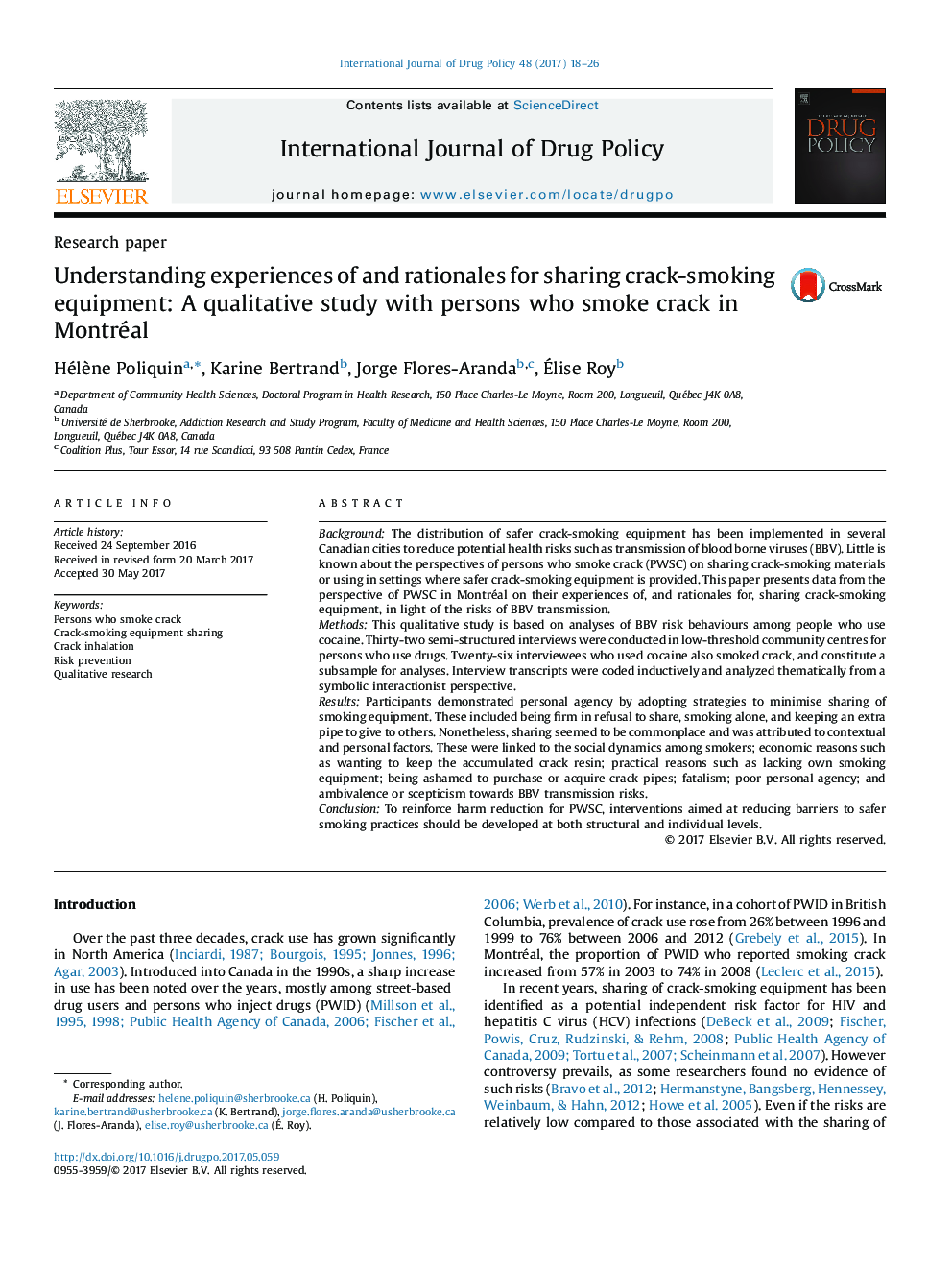| Article ID | Journal | Published Year | Pages | File Type |
|---|---|---|---|---|
| 5120762 | International Journal of Drug Policy | 2017 | 9 Pages |
BackgroundThe distribution of safer crack-smoking equipment has been implemented in several Canadian cities to reduce potential health risks such as transmission of blood borne viruses (BBV). Little is known about the perspectives of persons who smoke crack (PWSC) on sharing crack-smoking materials or using in settings where safer crack-smoking equipment is provided. This paper presents data from the perspective of PWSC in Montréal on their experiences of, and rationales for, sharing crack-smoking equipment, in light of the risks of BBV transmission.MethodsThis qualitative study is based on analyses of BBV risk behaviours among people who use cocaine. Thirty-two semi-structured interviews were conducted in low-threshold community centres for persons who use drugs. Twenty-six interviewees who used cocaine also smoked crack, and constitute a subsample for analyses. Interview transcripts were coded inductively and analyzed thematically from a symbolic interactionist perspective.ResultsParticipants demonstrated personal agency by adopting strategies to minimise sharing of smoking equipment. These included being firm in refusal to share, smoking alone, and keeping an extra pipe to give to others. Nonetheless, sharing seemed to be commonplace and was attributed to contextual and personal factors. These were linked to the social dynamics among smokers; economic reasons such as wanting to keep the accumulated crack resin; practical reasons such as lacking own smoking equipment; being ashamed to purchase or acquire crack pipes; fatalism; poor personal agency; and ambivalence or scepticism towards BBV transmission risks.ConclusionTo reinforce harm reduction for PWSC, interventions aimed at reducing barriers to safer smoking practices should be developed at both structural and individual levels.
